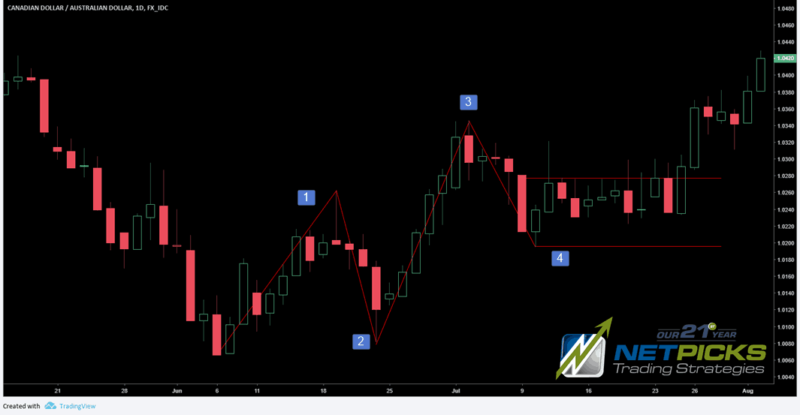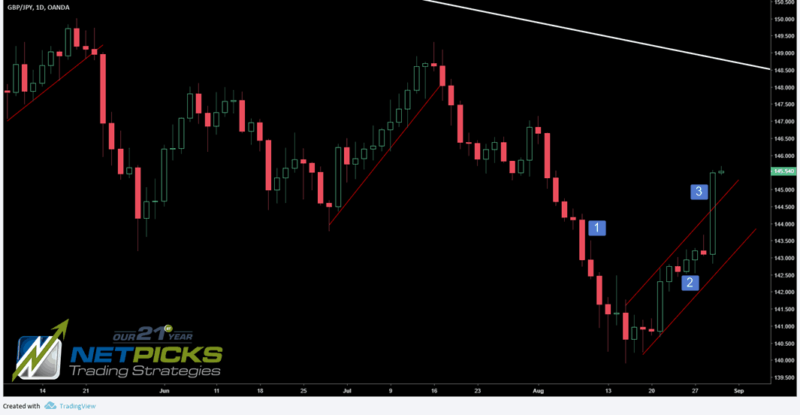- July 12, 2019
- Posted by: Shane Daly
- Categories: Secrets from Successful Traders, Trading Article

One of the simplest ways to look for trading setups is to watch for pullbacks in price from the current trend direction.
While it is not always easy to find a real edge in any market you trade, pullbacks are one of those price patterns that is an actual edge.
Yes, you will have to determine a few things such as:
- Is the market trending or in a consolidation?
- Does the impulse leg “look” like it deserves another move lower?
- Your entry, exit, and stop loss criteria
Nothing is guaranteed, even a price pattern that follows a normal ebb and flow can fail, and it is crucial that you understand how a pullback can fail.
Pullback Price Pattern Failure
As a market moves through different price levels, it does so in a simple pattern:
- Price will move with momentum in the direction of the overall trend
- Price will pull back from the price level it has reached
- Price will consolidate
You want to ensure the pullback in price has certain characteristics and those we should concern ourselves with show up in number one and three.
Let’s take a look at consolidation as our first concern.
Consolidation After Pullbacks
In this graphic, we see a common evolution of price.

- Price starts to move up into what eventually turns into an uptrend
- Healthy pullback which is fairly common after price begins a change of trend
- Price puts in higher high and after the low at two, this is a price pattern uptrend
- We look to trade the pullback from the momentum push into three and price begins to range
This is a daily Forex chart and it would be a challenge to enter this trade and sit through this range of price. If you did not get an entry trigger, you may decide to treat this new price evolution as a potential breakout trade.
Regardless of what happens next, this is a pullback failure and will require other methods to get into a trade
Momentum Against The Pullback
Remember that we want to trade a pullback in the context of a strong momentum leg that precedes the pullback. In the needed setup for a pullback trade lies what we don’t want to see.

This is a chart I was watching for a potential short entry – GBPJPY.
- Healthy move to the downside that didn’t end in a climax move
- While price initially broke from low with momentum (from what could be argued as a range) there were several days of lazy price action (no momentum)
- Brexit news hits the wire and price rockets to the upside with momentum
That momentum move violates a variable we need to see to consider a pullback worthy of a trade – lack of momentum.
This move takes any pullback move to join the down trend off the table.
It also does something else.
- If there is basing at the high of this impulse candlestick, I could consider a long trade depending on the price action in the range
- If there is a lazy pullback from this zone, a long trade could be considered
- If price pushed a little higher to the last minor swing level and gave a failure test of highs, that could be a short trade
This type of failure tends to be obvious but traders will still try to short this market as an impulse action due to the momentum to the upside.
Traders love to be contrarians and it certainly could drop hard from this level. You still need a setup to get you into the market to be consistent. A trading plan that simply states “fade momentum candlesticks” ignore the herd mentality.
While you are fading, others are afraid to miss the big move and are contrary to your position.
Understand Pattern Failures Can Setup Other Trades
All is not lost if you have been stalking a trade setup and see it fail.
As mentioned in the section of momentum in the pullback, this can set up three different scenarios that can be traded.
Pullbacks that fail by way of ranging price action could have a trader shifting their mindset and trading tactics to a breakout style of trade entry.
What is vital is a trader knowing when the trade setup they are watching is still valid. To do so, you must not only know what makes it successful, but also what it looks like when the setup is failing.

